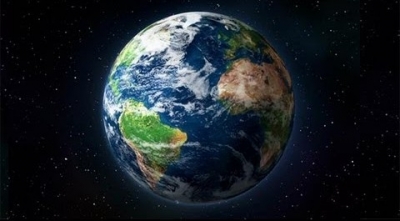
Caves have for long been linked with the history of civilization in many interesting ways. In the stone age, men used to live in caves to protect themselves from cold and animals. Ancient people had many strange notions about caves. The people of Greece believed that their gods Zeus, Pan, Dionsus and Pluto lived in caves. The Romans believed that caves were the homes of nymphs and sibyls. People of Persia worshipped caves considering them to be the abodes of God. Today, huge and beautiful caves all over the world have become centres of attraction for the tourists. Do you know how these caves were formed?
A cave is a deep hollow space in a mountain. It is formed in different ways. When water waves coming from the sea, collide with the mountains, they wash away the soft stones present in between the layers of the rocks. This process continued over a period of thousands of years and created large spaces inside the mountains which we call caves.
Some caves are found below the Earth’s surface also. These have been formed by the water streams flowing below the Earth’s surface. The underground water streams wash away the lime-stone from the rocks and the voids so created are called caves.
Quite often, waterfalls create hollow spaces within the rocks which ultimately become caves. Such caves have been formed below the Niagara Falls.
Caves are also formed by the volcanic changes taking place in the earth’s layers. Some caves are very long while some are very deep. The deepest cave is ‘Guffre de la piere st.’ situated on the border of France and Spain. It is 1310 metres (4300 ft) deep. The longest cave, ‘Flit Ridge cave system’ is situated in America and is 116.8 km (73 miles) long.
The longest single cavern in the world is the Sarawak chamber in Eastern Malaysia. It is 700 metres long and was discovered in 1980. Mammoth Cave National Park in the US State of Kentucky is the largest cave system of the world about 307 km long. In India, caves of Ajanta and Ellora are famous for their beautiful sculptures.


 Earth is perhaps the only planet in the solar system where life exists. This is because the conditions favourable for the existence of life are available only on the Earth. Conditions present in other planets make life almost impossible.
Earth is perhaps the only planet in the solar system where life exists. This is because the conditions favourable for the existence of life are available only on the Earth. Conditions present in other planets make life almost impossible. The heavenly bodies that revolve round the sun are called planets. There are nine planets in our solar system: Mercury, Venus, Earth, Mars, Jupiter, Saturn, Uranus, Neptune and Pluto. The bodies revolving round these planets are called their ‘satellites’ or ‘moons’.
The heavenly bodies that revolve round the sun are called planets. There are nine planets in our solar system: Mercury, Venus, Earth, Mars, Jupiter, Saturn, Uranus, Neptune and Pluto. The bodies revolving round these planets are called their ‘satellites’ or ‘moons’.



